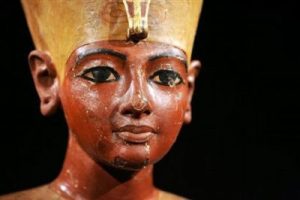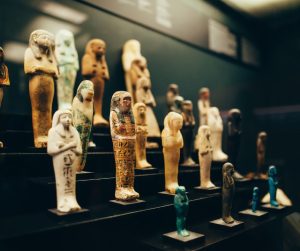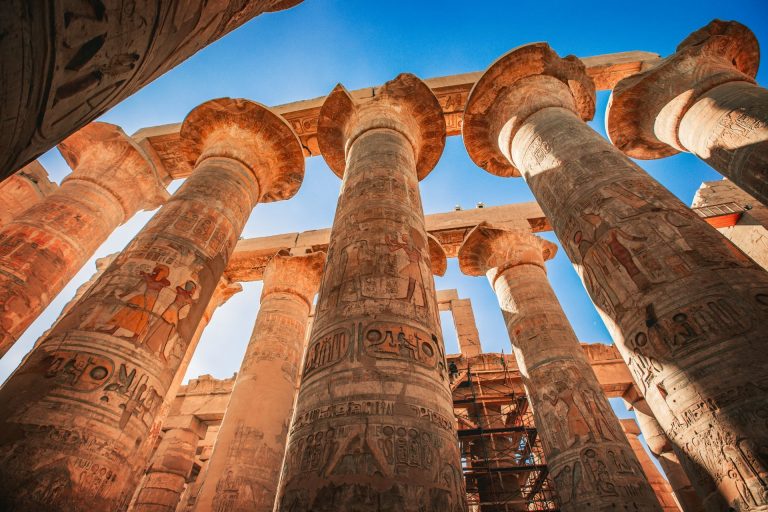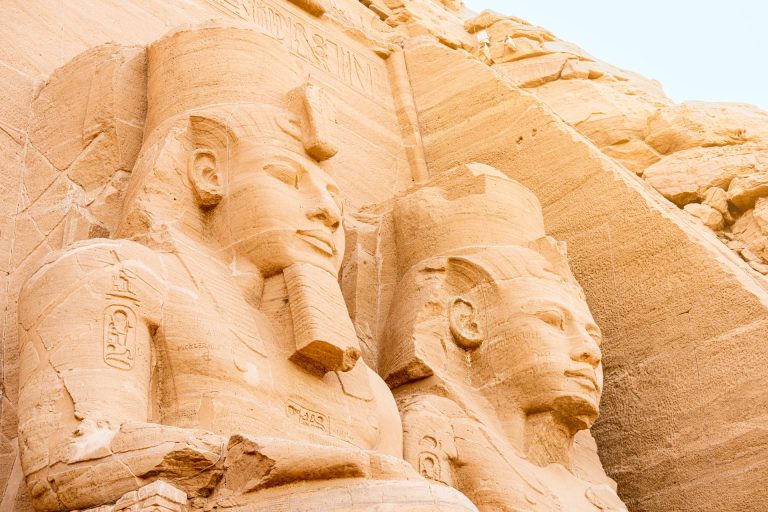Unmasking the Secrets of King Tut
Exploring the Life and Legacy of the Boy Pharaoh
The story of King Tutankhamun, the boy pharaoh, has fascinated the world for centuries. From the discovery of his tomb by Howard Carter in 1922 to the mysterious curse that seemed to plague those who entered, King Tut has captured our imaginations and left us with countless questions. In this blog post, we will delve deep into the life and legacy of this enigmatic ruler, unmasking the secrets that have shrouded him for millennia. Join us on this journey through ancient Egypt as we explore the captivating story of King Tutankhamun and seek to unravel the mysteries that surround his reign and untimely demise..

The discovery of King Tut’s tomb

The discovery of King Tut’s tomb is one of the most remarkable archaeological finds in history. It was in 1922 when British archaeologist Howard Carter stumbled upon the entrance to the tomb in the Valley of the Kings, near Luxor, Egypt. After years of tireless excavation work, Carter and his team finally broke through into the burial chamber, revealing a treasure trove of ancient artifacts and the mummified remains of the young pharaoh. The significance of this discovery cannot be overstated. Prior to the finding of King Tut’s tomb, the world’s knowledge of the boy pharaoh was limited to mere mentions in ancient texts. The tomb, however, provided an unprecedented glimpse into the life and legacy of this mysterious ruler. Inside the tomb, Carter and his team found an abundance of treasures, including furniture, jewelry, chariots, and even a golden funerary mask that adorned King Tut’s mummy. The intricate details and craftsmanship of these artifacts showcased the wealth and opulence of ancient Egyptian civilization. Not only did the discovery of King Tut’s tomb shed light on the lavish lifestyle of pharaohs, but it also gave valuable insights into the beliefs and rituals of ancient Egyptians regarding the afterlife. The presence of various burial items and the carefully arranged layout of the tomb indicated the Egyptians’ strong belief in the preservation of the pharaoh’s body and his journey into the next world. The discovery of King Tut’s tomb sparked a global fascination with ancient Egyptian history and culture. It ignited a renewed interest in archaeology and led to further expeditions and discoveries in the Valley of the Kings and beyond. Today, the artifacts from King Tut’s tomb can be found in the Egyptian Museum in Cairo, delighting millions of visitors who come to marvel at the treasures of the boy pharaoh. The legacy of King Tutankhamun lives on, not only in the glittering artifacts found in his tomb but also in the ongoing exploration and study of ancient Egypt’s rich and captivating history.
The life and reign of King Tutankhamun

Despite his short reign and initial obscurity, King Tutankhamun has become one of the most famous pharaohs in ancient Egyptian history. Born around 1341 BC, King Tut ascended to the throne at the young age of just nine years old. He was the son of Pharaoh Akhenaten and his wife Queen Kiya. It is believed that his reign lasted for approximately 10 years, from 1332 BC to 1323 BC. During his reign, King Tut made significant efforts to restore traditional religious practices that had been abandoned by his father, who promoted the worship of the sun god Aten. King Tut returned the capital of Egypt back to Thebes and reinstated the worship of Amun-Ra, the chief deity of the Egyptian pantheon. Despite his efforts, King Tut’s reign was relatively unremarkable in terms of military conquests or political achievements. However, his significance lies in the discovery of his tomb in the Valley of the Kings in 1922 by British archaeologist Howard Carter. This discovery revealed a treasure trove of artifacts and provided valuable insights into the wealth, artistry, and religious practices of ancient Egypt. The exquisite funerary mask of King Tut, made of solid gold and adorned with precious gemstones, is one of the most iconic images associated with ancient Egypt. It symbolizes the opulence and grandeur that was reserved for pharaohs. While the cause of King Tut’s death remains a subject of debate and speculation, modern forensic examinations suggest that he may have died at a young age, possibly as a result of complications from a broken leg combined with a case of malaria. Despite his relatively short and uneventful reign, King Tutankhamun’s legacy endures. His tomb and the treasures within it provide a unique window into the world of ancient Egypt, offering a glimpse into the beliefs, customs, and artistic achievements of this remarkable civilization.
The mysteries and legends surrounding King Tut

One of the most intriguing aspects of King Tut’s story is the mystery surrounding his death at such a young age. Many theories have been proposed, ranging from accidents to murder, and each has its own set of evidence and supporters. Some believe that the curse of the pharaohs, a supposed curse that befalls those who disturb the resting place of an ancient Egyptian ruler, is responsible for the untimely deaths of those involved in the discovery of King Tut’s tomb. While this curse has been largely debunked, the idea continues to add to the allure of the Boy Pharaoh. Additionally, the treasures found within King Tut’s tomb, including the iconic golden mask and elaborate funerary objects, have only added to the legend of his wealth and power. The intricate craftsmanship and preservation of these artifacts provide a glimpse into the opulence and extravagance of ancient Egyptian royalty. Despite ruling for only a short period, King Tut’s impact on ancient Egyptian history cannot be underestimated. His death marked the end of the 18th dynasty and the beginning of a turbulent era in Egyptian history.
The legacy of King Tut today

Although his reign was short-lived, his tomb and the treasures it contained have provided invaluable insights into the life and culture of ancient Egypt. One of the most significant aspects of King Tut’s legacy is the discovery of his intact tomb by archaeologist Howard Carter in 1922. This discovery was a groundbreaking moment in the field of Egyptology and sparked a renewed interest in the study of ancient Egyptian history. The treasures found within the tomb, including the iconic golden burial mask, have become symbols of the wealth and splendor of ancient Egypt. Furthermore, King Tut’s legacy extends beyond the archaeological realm. His story has shaped popular culture and inspired countless books, movies, and exhibitions. The fascination with his life and the mysteries surrounding his death have fueled a sense of wonder and intrigue that persists to this day. Moreover, King Tut’s legacy has had a profound impact on our understanding of ancient Egyptian society. His tomb provided a rare glimpse into the funerary practices, religious beliefs, and artistic traditions of the time. The meticulous preservation of his tomb also allowed researchers to study the technology and craftsmanship of ancient Egyptian artisans. In addition, King Tut’s legacy has played a crucial role in promoting tourism in Egypt. The allure of exploring the treasures of ancient Egypt, including those of King Tut, has drawn countless visitors to the country, contributing to its economy and cultural heritage.





